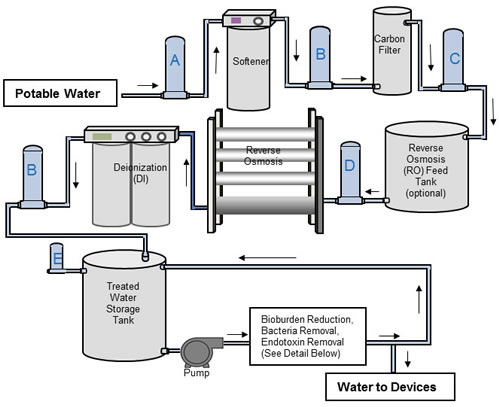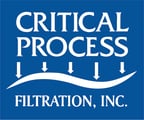There are several methods to keep bacteria and endotoxin from entering a system, including filtration of the air that enters tanks as they are emptied.
Operators of water treatment systems in healthcare facilities try to keep their systems free of bacteria and endotoxins that may harm patients. There are several methods to keep bacteria and endotoxin from entering a system, including filtration of the air that enters tanks as they are emptied. This document looks at how tank vent filters fit into the array of tools available to prevent bacterial contamination of water systems.
Prevention and Remediation
Most of the time, the old saying “an ounce of prevention is worth a pound of cure” is true. Preventing an unwanted event is usually easier than repairing whatever damage is done if the event occurs. However, in virtually all water systems, including medical water systems, BOTH prevention and remediation are needed to control bacteria.
We define prevention as not allowing bacteria to enter a system. The best ways to do that are, a) design the system using components that are operated with a minimum of maintenance, and b) create barriers wherever there may be an opportunity for bacteria to enter the system from outside sources. Keeping the system components sealed and barriers in place is usually very effective. Unfortunately, almost any maintenance activity requires opening the system and exposing it to the atmosphere and bacteria.
Since it is almost impossible to totally prevent bacteria from entering a system, remediation steps are needed to prevent bacterial growth to unacceptable levels. Those steps usually take one of three forms: 1) inhibiting bacterial growth with high temperatures or high flows; 2) killing bacteria through system sanitizing and/or disinfection with heat or chemicals; 3) physically removing bacteria (as with filtration).
Using both prevention and remediation places multiple obstacles in the way of bacteria that might adversely affect system compliance and potentially harm patients.

Figure 1 - Filters in a Medical Water System
A- Particle Trap Filtration
B- Resin Trap
C - Carbon Fines Trap
D- RO Prefilter
E- Tank Vent Filter
Why Tank Vent Filters?
Most tanks are not very strong structures, unless made specificaly to operate under vacuum conditions. The tanks used in most medical water systems are usually not rated for a vacuum, even if they are made of stainless steel, so operating them at elevated pressure or under a vacuum could cause structural bulging or tank implosion. Therefore, when tanks are filled or emptied, air is allowed to flow into and out of the tank to avoid pressurizing it or causing a vacuum condition. Using a vent filter allows the air inside to escape as the tank is being filled, then allows clean, bacteria-free air to enter to replace lost liquid volume when the tank is emptied.
Figure 1 on the previous page shows multiple filters used to control particles and bacteria in a medical water system. The filters on the tops of tanks (marked E in the diagram) are used to filter the air directly in contact with water stored in the tanks
Filters for Air vs Liquid
Filters used for liquid applications are usually made of materials that attract water – are ‘hydrophilic’ – and allow the flow of liquids through the media or membrane with low resistance. For air filtration, it is critical that the media remain dry. If the media becomes wet and the pores are filled with liquid, then the required airflow is restricted and the pressure or vacuum inside the tank can reach critical levels and cause tank failure. The various media used for air filters are ‘hydrophobic’ – they repel water – and resist wetting from water vapor.
Filter Options
Critical Process Filtration’s hydrophobic PVDF or PTFE membrane-based cartridges and capsules are utilized for ambient temperature storage tanks. Some medical water systems are frequently sanitized using elevated temperatures, requiring the use of specially designed PTFE membrane cartridges made for continuous high-heat applications (70ºC to 90ºC).
All of the filters chosen need to tolerate any chemical disinfectants used in the system (bleach, peracetic acid, etc) and also should be constructed to withstand any heat sterilization or sanitization cycles (hot water or steam).
Contact Critical Process Filtration or visit us at www.criticalprocess.com for assistance in determining the best filter options for your system and access to datasheets for all of our products.
